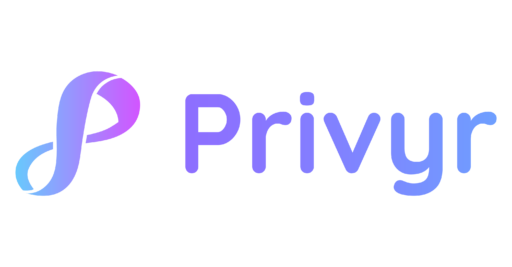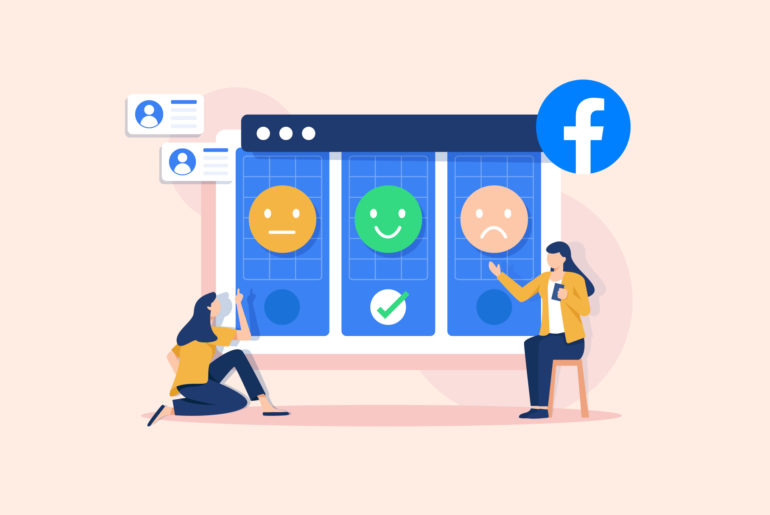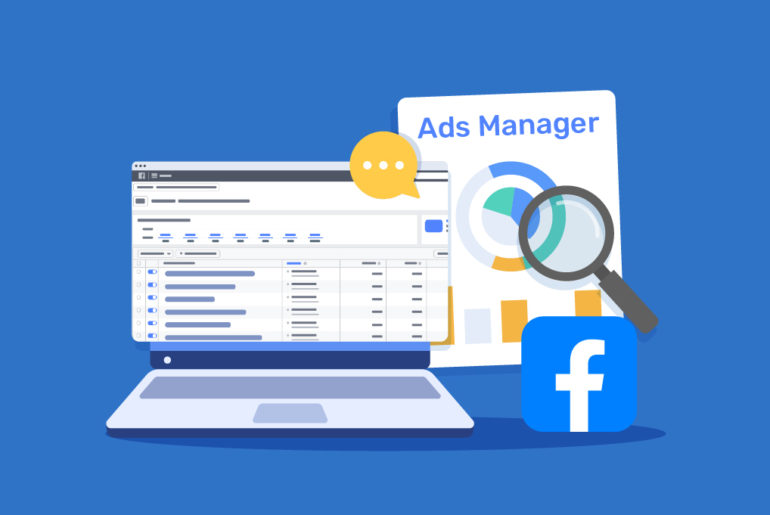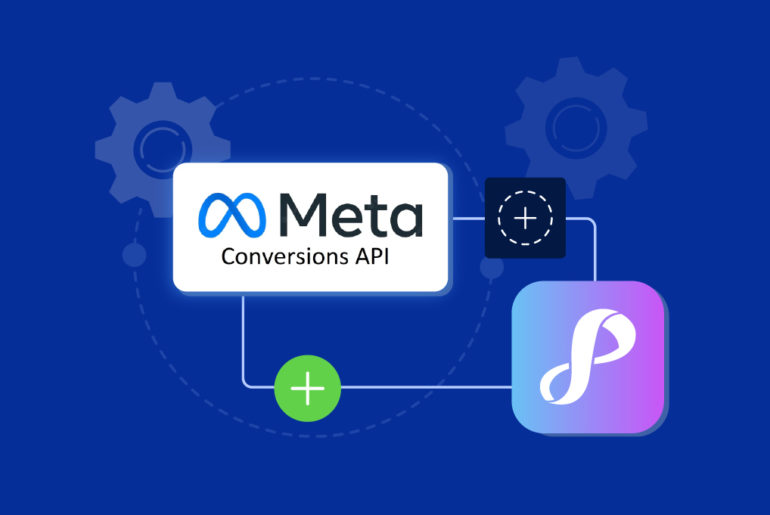Facebook Lead Ads can be an efficient way to generate leads. Not only does it let you target the right people from a huge pool, it’s also user-friendly as users can submit their information without leaving Facebook. Also, Facebook Lead Ads makes it quite easy for you to collect leads since you don’t need your own website or any other external software or tool to run it.
However, generating leads is only half the battle. Your main goal is to convert as many leads into customers as you can. If you receive or manage a small number of leads every month (and it’s fine for your business), you can handle them manually, but things can get messy if you need to manage a lot of leads. You may actually lose out on many quality leads for not being able to contact them on time and not follow up properly.
This is where a Client Relationship Management System (CRM) comes in to help you manage your leads and clients, all in one place. CRM integration with Facebook Lead Ads allows you to automate the process of receiving leads from Facebook in your system to save you tons of time and effort. Subsequently, you can focus your efforts on more productive affairs.
In this article, we’ll guide you through the best practices of CRM integration with Facebook Lead Ads.
Table of contents
How to set up Facebook Lead Ads
What is CRM Integration with Facebook Lead Ads
How to set up a CRM Integration with Facebook Lead Ads
How to manage Facebook leads with a CRM
Best practices for following up with leads (and how CRM helps you implement them)
Conclusion
How to set up Facebook Lead Ads
Setting up Facebook Lead Ads is pretty easy. You can do it from your page or Facebook Business Manager. However, before you create a Facebook Lead Ad campaign, it’s best that you know your target audience. It helps you reach high quality leads and also allows you to design your ad creative and create a lead form correctly. Here’s a step-by-step guide:
- Go to your Facebook Ads Manager account and click the “+ Create” button.
- You’ll see a new menu that lets you choose the objective of your ad campaign. Select “Lead generation” as your objective.
- Name your campaign and set up the budget, schedule, and audience targeting options.
- Choose the format of your ad. For lead ads, you can choose from various formats, including single image, carousel, and video.
- Finish your ad by adding your ad copy, images or videos, and CTA.
- Set up the lead form. A lead form is where you’ll collect user data, such as name, email, and phone number. You can customise the form fields and add custom questions to get more information from the user.
- Set up the privacy policy and disclaimer. Facebook requires you to provide a link to your privacy policy and a disclaimer stating that the user’s information will be used for marketing purposes.
- Review your ad and publish it. Once your ad is approved, you’ll start collecting leads.
If you’re confused about Facebook Privacy Policy, here’s your guide to creating your Facebook Privacy Policy for Facebook Lead Ads in under a minute.
Suggested Read: Facebook Lead Ads: How to Generate More Leads in 2023
Best practices for designing Lead Ads that get higher conversions
Although creating Facebook Lead Ads is simple, you should note that people don’t usually click on ads unless they find it relatable or interesting. Therefore, it’s really important that your ads are not only attention-grabbing but also user-friendly (once they click). Here are a few practices you can employ to make your ads more effective.
- Use attention-grabbing visuals: People are more likely to engage with attention-grabbing content than generic ones. In the case of ads, standing out is even more important. Use high-quality graphics that are relevant to your offer and catch the user’s attention.
- Keep it simple: Ensure your ad is easy to understand and doesn’t overwhelm your leads with too much information. Use simple language and avoid jargon.
- Offer value: Make sure your offer is valuable and compelling for the user so they fill out the lead form. You may also offer a discount, a free trial, or anything that’s relevant to your target audience.
- Customise your lead form: Too many fields can deter users from filling out the form. Therefore, it’s crucial that you customise your lead form to suit your audience. Make your form simple and easy to fill out, and avoid asking for unnecessary information. Also, include a clear and concise description of what the user will get in exchange for providing their information.
- Use a clear call-to-action (CTA): Use a clear and compelling CTA that informs the user exactly what to do next. Use action words like “Sign Up,” “Get Started,” or “Claim Your Offer” to encourage users to take action.
- Test and optimise your ad: Test different ad variations to see what works best for your audience. Use A/B testing to experiment with different images, headlines, and CTAs. Then use the data you gather to optimise your ad for maximum conversion.
What is CRM Integration with Facebook Lead Ads
CRM integration with Facebook Lead Ads refers to the process of connecting your CRM to the Facebook interface so you can automatically receive leads generated from Facebook Lead Ads in your CRM. Being able to automatically capture and organise the lead information in your CRM means you can save a lot of time and effort and manage your leads more effectively.
When a user fills out a lead form on Facebook, their information is captured by the platform. To access that data, you need to manually download it to your desktop in a CSV file and then import it to your CRM. Manually transferring the data from Facebook to your CRM can be time-consuming and prone to errors since Facebook doesn’t alert you of new leads. By integrating Facebook Lead Ads with a CRM system, you can automate this process and ensure all leads are captured accurately and efficiently.
A CRM is simply a software that helps you manage your leads and clients and some don’t connect to Facebook directly. In these cases, you might need a third-party tool like Zapier to transfer leads from Facebook into your CRM. However, many CRMs have their own integration tools.
Benefits of integrating your CRM with Facebook Lead Ads
Integrating your CRM with Facebook Lead Ads can help you streamline your lead management process as you can track, manage, and follow up with leads more efficiently. Here are a few benefits of integrating your CRM with Facebook Leads:
- Streamlined steps: By integrating your CRM with Facebook Lead Ads, you can automate the process of capturing and managing leads, eliminating the need for manual data entry and reducing the risk of errors.
- Faster lead follow-up: With CRM integration, you can receive leads in real-time, allowing you to follow up with them quickly and efficiently. This can increase your chances of getting a reply.
- Improved lead nurturing: CRM integration helps you set up automated lead nurturing sequences based on lead behaviour and preferences, allowing you to deliver personalised content and messages to each lead.
- More insights into lead behaviour: By tracking leads in your CRM, you can gain valuable insights into their behaviour, such as how they engage with your content, what type of content they are most interested in, and how close they are to making a purchase.
How to set up a CRM Integration with Facebook Lead Ads
Here’s how you can set up a CRM integration with Facebook Lead Ads:
- Choose a CRM: There are many CRMs available for different needs. Therefore, the first step is to know what you need and choose a tool that best suits your business and sales process. Some popular options include Salesforce, HubSpot, Zoho CRM, and Privyr.
- Set up the integration: Once you’ve chosen your CRM, you’ll need to set up the integration with Facebook. Most CRMs have a built-in integration with Facebook Lead Ads, or you can use a third-party tool like Zapier to set it up.
- Map the fields: When setting up the integration, you’ll need to map the fields from your lead form to the corresponding fields in your CRM. This will ensure the data is transferred accurately from Facebook to your CRM.
- Test the integration: After setting up the integration, test it to make sure everything is working correctly. Submit a test lead form and check if the data is being transferred to your CRM.
- Automate your follow-up: Once your leads are in your CRM, set up automated follow-up sequences to keep them engaged and move them through your sales funnel. Use email or messaging apps to nurture your leads and provide them with valuable content.
Don’t know how to test your lead form? Here’s an article on “How to use Facebook Lead Ads Testing Tool”.
How to manage Facebook leads with a CRM
CRMs can either be very lightweight and easy to use, or complex with a steep learning curve. You should choose the right CRM depending on your company’s needs and objectives. For instance, if you’re a big enterprise, you’ll need a CRM with advanced features designed to manage huge data and teams. And you need a dedicated trained team to manage the workflow via such CRMs. On the other hand, if you’re a small business with a simpler workflow and limited resources, there are CRMs like Privyr to help you manage your leads and run sales processes all from your smartphone.
CRMs can help you automate so many processes, ranging from downloading leads from Facebook to sending personalised messages to your leads. Once you integrate your CRM with Facebook, you can easily manage your leads and avoid visiting Facebook’s Leads Library multiple times a day just to check for new leads. However, you should always test first if your CRM is integrated correctly.
Best practices for following up with leads (and how CRM helps you implement them)
At the end of the day, a CRM is just a tool that streamlines your process and makes your work easy. Successfully converting leads into customers depends on how you approach and manage them. Here are some best practices for following up with your Facebook leads:
Set up instant lead alerts
Responding to leads promptly helps maintain their interest in your product or service. Setting up instant lead alerts can help you stay on top of new leads and respond to them quickly. A CRM helps you get notified instantly when a new lead is added to your system, allowing you to respond almost immediately after they submitted interest.
Make it easy to access your leads anywhere, anytime
Accessing your leads from anywhere ensures you don’t always have to be in your office or in front of your device once you run Lead Ads on Facebook. It also ensures you won’t miss out on your leads. However, keep in mind that accessing leads on all your devices isn’t possible without a CRM. There are very few CRMs that allow you to run your process on all your smart devices. A good example of such CRMs is Privyr.
Personalise your follow-up messages
Personalisation is crucial not only to convert your customers but also to initiate a conversation. Leads often confuse generic messages with cold promotions. Although you can create personalised messages manually, composing each message can be time consuming. A CRM can help you personalise your follow-up messages by storing information about each lead, such as their name, company, and interests. This information can then be used to tailor your follow-up messages to each lead, making them feel valued, and increasing the likelihood of getting positive responses.
Use marketing automation to streamline your follow-up process
Marketing automation is using technology to automate repetitive marketing tasks. While there are some tools specifically built for it, a CRM can help you automate your follow-up processes by sending automated emails, scheduling follow-up calls, and assigning tasks to team members. This can save you time and resources while ensuring that each lead receives a timely and personalised follow-up.
Use lead scoring to prioritise your follow-up efforts
Not all leads are created equal, and some are more likely to convert than others. Lead scoring is a method of ranking leads based on their level of engagement with your business, such as website visits, email open rate, and social media interactions. A CRM can be used to assign scores to leads based on their behaviour, allowing businesses to prioritise their follow-up efforts on leads with the highest scores and the greatest potential for conversion.
Conclusion
Integrating your CRM with Facebook Lead Ads can help you streamline your lead management and follow-up processes, resulting in more efficient lead nurturing and higher conversion rates. Remember, the goal is to get your leads quicker, contact them faster, save time and manual work, and ultimately increase sales. Aim for productivity, instead of introducing many layers of new systems and processes.
Here’s how Privyr’s Facebook Lead Ads integration works, with a super simple setup:
If you’re a small business owner and don’t have a CRM in place already, try Privyr for free. It’s a mobile-first CRM and an incredible sales productivity tool that’ll allow you to contact your new Facebook leads within seconds of them submitting the lead form. You can receive real-time lead alerts and manage your sales process, including follow-ups, sending personalised messages and so much more from your smartphone.








